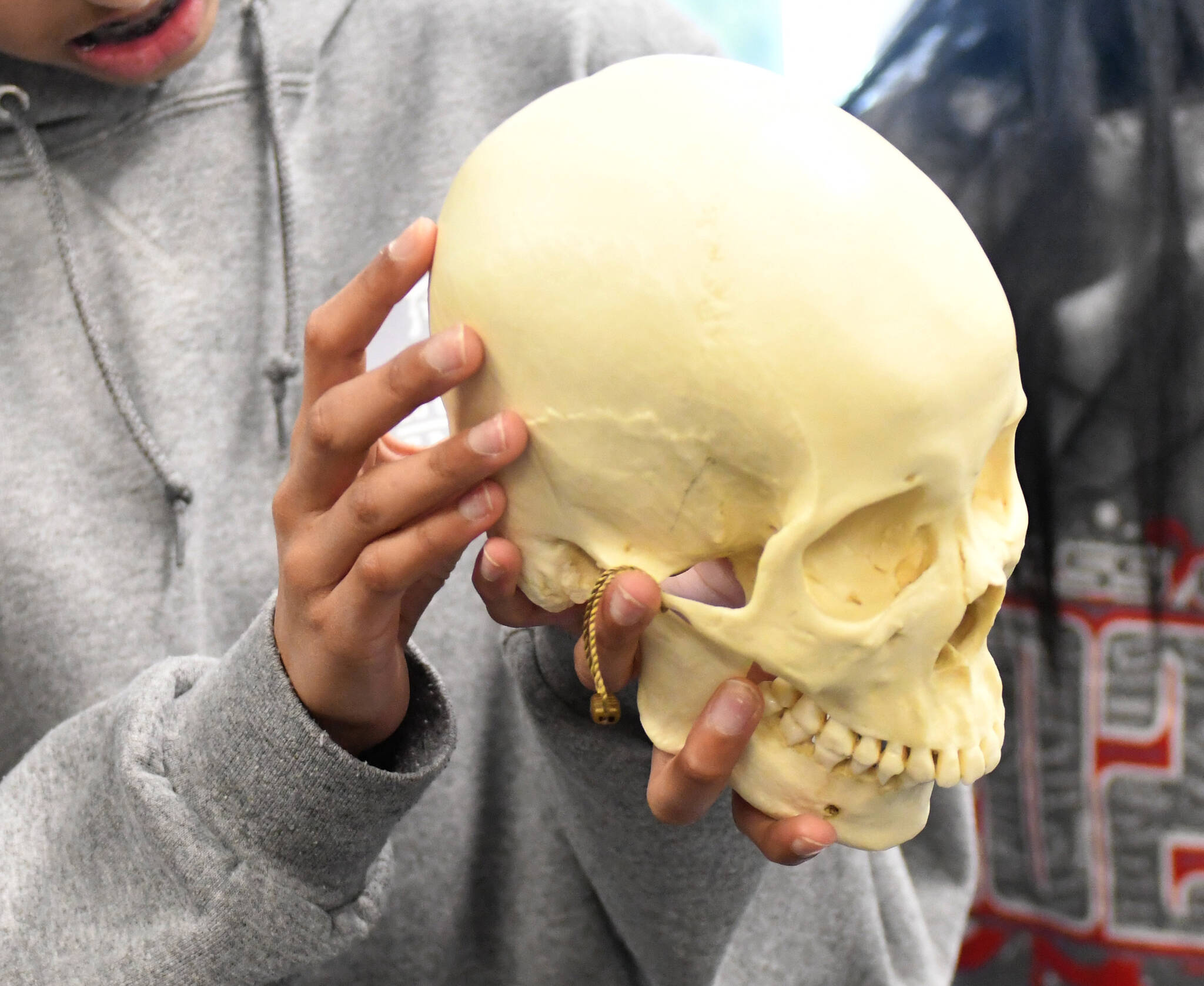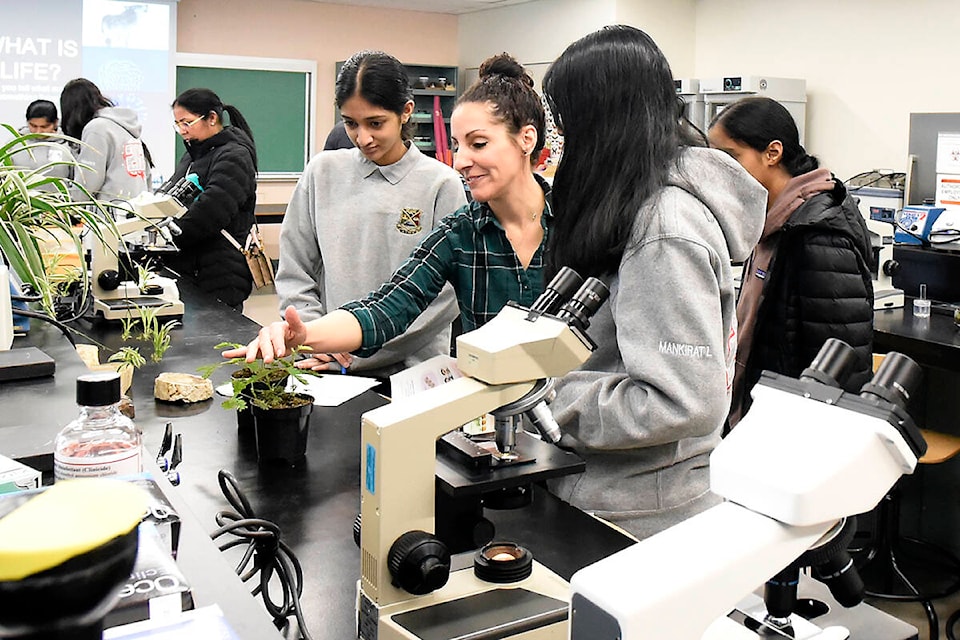A day of science exploration for Abbotsford Traditional School (ATS) students on Tuesday included a chance to nibble on crickets, hold a human skull and tinker with electricity.
About 120 Grade 8 students were invited to the science labs at the University of the Fraser Valley, whose faculty had lightning-fast classes lined up throughout the day.
In a biology class led by Renee Prasad, students got up close and personal with various live insects. They learned why scientists are trying to encourage more people to consider eating bug-based protein, such as crickets.
One of the main reasons, Prasad said, is that “we’re already eating it.”
Prasad is a department chair and associate professor of Agriculture at UFV. She explained to the students that people around the world include various insects in their diets, she explained, even though it’s eschewed by the majority of people in North America. She outlined the benefits, including fewer greenhouse gas emissions, much less land use, and less protein needed to produce one kilogram of insect protein, compared what’s required for other protein sources, such as beef, chicken and eggs.
One of the slides showed that an insect isn’t all that different from prawns or shrimp, although you don’t take the exoskeleton off an insect before consuming it.
When she told the students they would have a chance to eat some cricket protein at the end of the class, there were a few groans among the chatter.
“A lot of you are making faces,” she said, laughing.
UFV students were on hand to show the ATS students how to use a microscope to have a closer look at some live specimens brought in for the day. Crickets hopped around each other in bags, and larvae crawled slowly in containers.
When it came time to dig right into the matter, about half a dozen students held their hand out to try the aptly named “chocolate chirp cookies” being offered. While they had been expecting the cookies would maybe have chunks of bugs, or perhaps the odd antenna, the students were pleased to find they just tasted like cookies.
That’s because they were made with cricket protein powder, which is exactly what it sounds like. Cricket protein can be added to anything you’d normally eat, such as baked cookies or even shakes.
One of the students asked Prasad if she would ever eat a cricket. She confided with another laugh, “No.”
But in her house, she said, they are using the protein in shakes and learning to get used to the idea.
In another classroom, a different group was learning another reason to care about science – natural disasters and the science of geography. This talk was led by instructors Carin Bondar and Talha Qadri, and post-doctorate fellow Maria Schaarschmidt.
Each of them spoke to the students about their work in land use, focusing on the recent concurring disasters of flooding and forest fires.
Schaarschmidt walked through the different ways science is being used to mitigate the impact of what are unavoidable disasters, such as landslides and flooding.
As land and water move around, humans and our homes and other infrastructure are often damaged. Lives are lost. But cyclical disasters can often be predicted, she said, and so there are ways to make sure they cause less harm.
For example, she said, the netting and concrete that encase cliffs along the Sea-to-Sky Highway to Whistler are there because we know that the land is constantly moving into the water. This mitigation strategy helps reduce the damage on the roads and in communities.
Qadri talked about how his work looks at “environmental unity,” or compounding disasters, like the ones experienced locally over the past few years. When a fire season destroys trees, it also destroys vegetation and changes the land, making it more susceptible to other disasters.
“Then you have one disaster merging into another,” he said, and he reminded the students that in the thick of it all, it was difficult to find necessary things like milk and meat at grocery stores.
Bondar spoke to the ATS students about communicating disasters – and other science issues – to the public, while pointing out all the potential careers in science.
Back in the biology lab, Prasad gave the students this nugget of wisdom as they start exploring what their post-secondary careers will look like.
“When you leave a university, whether it’s after two hours like today, or two years or more, it’s best to leave with more questions,” she said.
READ MORE: Yale Secondary Leadership 11 students give back to Abbotsford
@CHWKcommunity
jessica.peters@abbynews.com
Like us on Facebook and follow us on Twitter.

